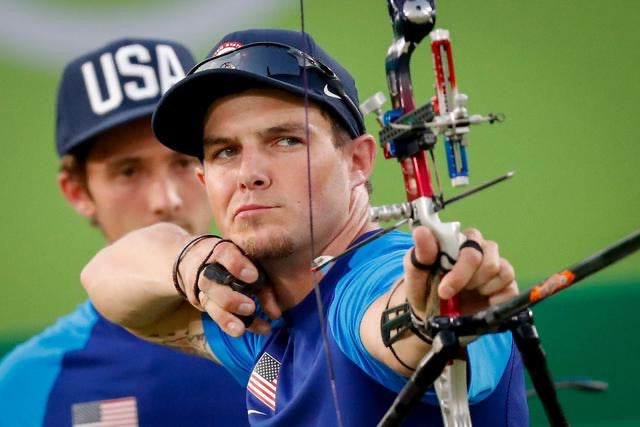
Mastering the Mental Game in Archery
Share
In archery, the difference between a good shot and a great shot is often in the mental game. While many claim that archery is 90% mental and 10% physical, few actually dedicate time to training their minds. In this post, I’ll break down what I focused on mentally when I was competing at the highest levels and what I did while practicing to prepare for important tournaments.
The Mental Game: What Separates the Best from the Rest?
Every competitive sport requires mental toughness, and archery is no exception. While talent, work ethic, and technique play a role, mental discipline is what truly sets elite athletes apart. The key isn’t just having strong form—it’s repeating that form consistently, even under extreme pressure.
At the club level, archers often have many things to think about—from stance to grip, aiming, and release. At the elite level, the focus narrows to just a few critical factors that produce consistent results. This is where mental training comes in—knowing what to focus on and what to ignore.
Staying Focused in the Process
The best archers don’t rely on voodoo magic or secret tricks. Instead, they train themselves to focus only on the process—not the outcome.
✅ At the club level, the focus should be on:
- Anchor consistency – How does it feel?
- String alignment – Is it where it needs to be?
- Bone alignment – Are you properly stacked?
- Grip pressure – Is it the same every shot?
✅ At the elite level, the focus shifts to:
- Reinforcing key habits – Hooking the string and gripping the bow the same way every time.
- Breathing control – Staying relaxed and in rhythm.
- Mental repetition – Thinking about the same thing every shot.
This shift in focus is what separates top-level shooters. They no longer get distracted by minor adjustments or external factors. Instead, they hone in on repeatability and precision.
What Goes Through a High-Level Archer’s Mind?
Many archers ask: What are you thinking about when you shoot?
The answer? The same thing, every single time.
At the highest levels, archers don’t think about small details anymore—they feel them. For example:
- I don’t think about how to hook the string—I just feel if it's right.
- I don’t think about my grip—I just check that it feels the same every time.
- I don’t let distractions (crowd noise, competitors, weather) affect my focus.
Instead of focusing on dozens of technical details, elite archers focus on what gives them the highest chance of success on that given day.
The Importance of Mental Checklists
For club-level shooters, having a mental checklist can help develop consistency. Writing down your process and reviewing it before every shot will reinforce good habits.
Example of a Mental Checklist for Archery:
1️⃣ Feet first – Set your stance.
2️⃣ Load the arrow the same way – Make sure the nock is positioned correctly.
3️⃣ Hook & grip – Set your fingers on the string properly.
4️⃣ Breathe and center yourself – Find your rhythm.
5️⃣ Lift with the correct shoulder movement – Let the other side follow naturally.
6️⃣ Draw with the shoulder, not the arm – Engage your back muscles.
7️⃣ Anchor and settle into the shot – Feel your position.
8️⃣ Check string alignment – Ensure everything is lined up.
9️⃣ Start aiming – Maintain focus, trust the process.
🔟 Expand and execute the shot – Follow through with authority.
Having this repeatable process helps eliminate unnecessary thoughts and distractions.
How to Handle Pressure in Competition
The only difference between training and competition is the added pressure of a score. So how do you handle it?
1️⃣ Find Your Key Focus for the Day
- Every tournament is different.
- Identify one or two things that will keep you in rhythm.
2️⃣ Recognize Distractions and Let Them Go
- Ignore crowd noise, other competitors, and bad shots.
- Stay locked into your process.
3️⃣ Be Aware of Small Adjustments
- Travel, jet lag, dehydration, and mental fatigue can affect performance.
- If something feels “off,” identify the cause and make a small adjustment.
4️⃣ Trust Your Training
- At a tournament, your focus should be on execution, not overthinking.
- Fall back on the fundamentals you’ve trained every day.
Control vs. Confidence: Finding the Balance
In archery, there are two key mental aspects that must be balanced:
🔹 Control
- Ensuring every movement is intentional and repeatable.
- Necessary when making form changes or refining technique.
🔹 Confidence
- Having the trust to execute without hesitation.
- Once at full draw, you must commit to the shot with authority.
📌 Tip: If you’re making form changes, you’ll be closer to the control side. But as you become more proficient, you need to shift toward confidence—trusting that your shot will land in the 10.
At a high level, the best shooters still control the things that matter, but when it’s time to release the arrow, they let confidence take over.
Final Thoughts
Your mental game in archery is just as important—if not more important—than your physical technique. The key to performing at a high level is:
✅ Sticking to your process – Every shot, every time.
✅ Blocking out distractions – Focus only on what truly matters.
✅ Balancing control and confidence – Control your form, but execute with trust.
Mastering the mental game takes time, effort, and self-awareness, but when done correctly, it allows you to perform under pressure, shoot consistently, and reach your full potential as an archer.
If you found this post helpful, let me know what mental topics you’d like to dive deeper into. Comment below with any questions!
📌 Subscribe to my YouTube channel for more archery insights and mental training tips!
💪🏹 Stay focused, stay consistent, and shoot strong!


1 comment
Wonderful breakdown of process and procedure from where I am (relatively new to archery) and where you are (Elite Archer). The “tools” you’ve listed in this article are timely and timeless; thank you for making the time to help is on our journeys. “It’s Archery; just try it!”